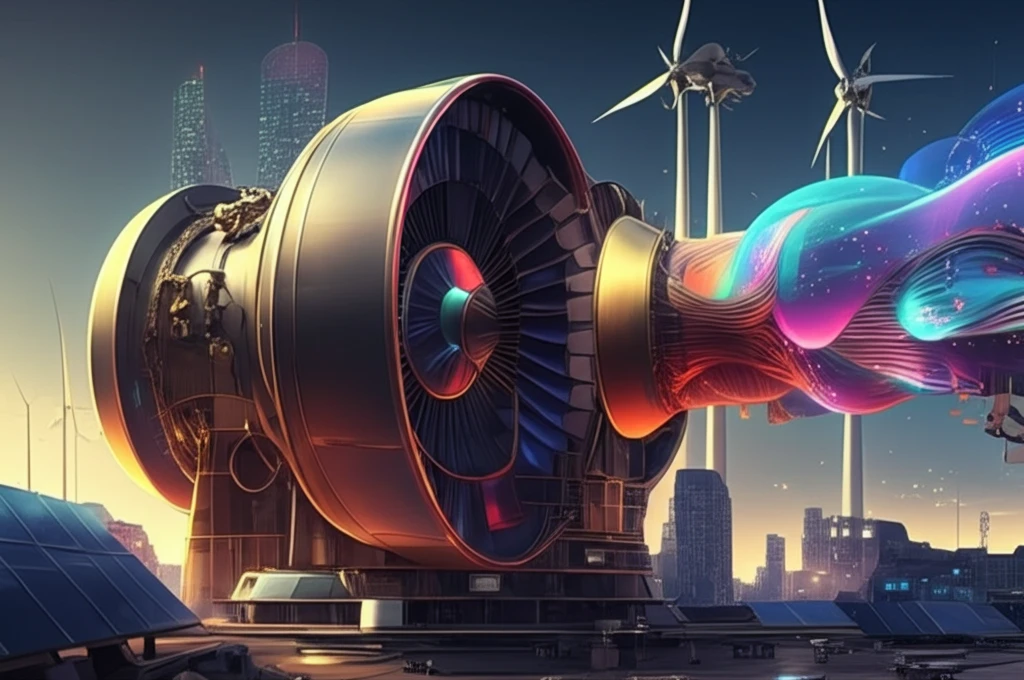
Turbocharge Efficiency: How Pre-Swirl Systems are Revolutionizing Gas Turbines
"Unlock the secrets of pre-swirl technology and discover how it's enhancing gas turbine performance, reducing emissions, and pushing the boundaries of engineering innovation for a sustainable future."
In the relentless pursuit of cleaner and more efficient energy, gas turbines stand as a critical technology. The heart of a gas turbine lies in its ability to convert fuel into mechanical energy, which in turn drives generators to produce electricity. However, this process isn't without its challenges, particularly the high temperatures and stresses that turbine components must endure. Enhancing the efficiency and longevity of these components is key to reducing fuel consumption and emissions.
One of the most promising advancements in gas turbine technology is the implementation of pre-swirl systems. These ingenious designs manipulate the flow of air before it enters the turbine, optimizing its angle and velocity to improve overall performance. The result? Increased efficiency, reduced fuel consumption, and lower emissions. This article delves into the fascinating world of pre-swirl systems, exploring the latest research, design innovations, and real-world applications.
We'll explore the innovative methods engineers are using to characterize and optimize these systems, from advanced numerical simulations to cutting-edge experimental techniques. Join us as we uncover the secrets of pre-swirl technology and its transformative potential for the future of energy.
What are Pre-Swirl Systems and How Do They Boost Gas Turbine Performance?

Pre-swirl systems are designed to precisely control the airflow entering a gas turbine. By inducing a swirling motion in the air upstream of the turbine blades, these systems can optimize the angle of attack and relative velocity of the airflow. This, in turn, leads to a more efficient transfer of energy from the hot gas stream to the turbine rotor.
- Increased Efficiency: Optimizing airflow reduces energy losses and improves turbine performance.
- Reduced Fuel Consumption: Higher efficiency means less fuel is needed to generate the same amount of power.
- Lower Emissions: Reduced fuel consumption directly translates to lower greenhouse gas emissions.
- Extended Component Lifespan: Optimized airflow reduces stress on turbine blades, extending their operational life.
The Future of Gas Turbines: Efficiency and Sustainability
Pre-swirl systems represent a crucial step forward in the quest for more efficient and sustainable energy production. As the demand for power continues to grow, these innovative technologies will play an increasingly important role in minimizing our environmental impact and ensuring a reliable energy supply for future generations. Continued research and development in this field will pave the way for even more advanced gas turbine designs, pushing the boundaries of engineering and creating a cleaner, more sustainable world.
